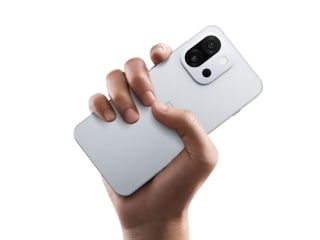- Home
- Internet
- Internet News
- 'Super Wi Fi' poised for growth in US, elsewhere
'Super Wi-Fi' poised for growth in US, elsewhere

So-called "Super Wi-Fi," which offers a bigger range than existing hotspots, is being deployed in the United States and generating interest in a number of countries, including Britain and Brazil.
Super Wi-Fi is not really Wi-Fi because it uses a different frequency and requires specially designed equipment, but it offers some of Wi-Fi's advantages, and more.
The name was coined by the US Federal Communications Commission in 2010, when it approved the deployment of unused broadcast television spectrum, or so-called "white spaces," for wireless broadband.
The long range and use of the broadcast spectrum could allow wireless signals to travel farther than Wi-Fi in theory as far as 100 miles (160 kilometers) although for practical reasons the range will probably be only a few miles.
Michael Calabrese, director of the Wireless Future Project at the New America Foundation, said that is an advantage of using the broadcast spectrum.
"Wi-Fi has been booming, but it has been limited by the frequencies it operates on, which go only a few hundred meters," said Calabrese, who has been pressing for the use of "white spaces" since 2002.
In contrast, "television frequencies travel long distances at low power and penetrate through buildings, trees and bad weather," Calabrese said.
This could provide high-speed Internet to sparsely populated rural areas which lack broadband. It could also allow consumers to create their own hotspots, which could be used on devices while away from their homes.
The first deployment of Super Wi-Fi came last year by Rice University in Houston, Texas, followed by another earlier this year in Wilmington, North Carolina.
A coalition of organizations has announced plans to deploy Super Wi-Fi to college campuses in rural areas starting early next year in a project called AIR.U, backed by Google and Microsoft.
Super Wi-Fi would be on "unlicensed" spectrum, like Wi-Fi, so companies would not bid on exclusive spectrum rights. This can lower costs. And there is often excess capacity, especially in rural areas, where fewer TV stations operate.
Mobile phone companies could use Super Wi-Fi, as they do now with Wi-Fi, to relieve some of the "spectrum crunch" from the explosion of mobile devices like smartphones and tablets.
But in order for Super Wi-Fi to gain traction, manufacturers of PCs and other devices would have to make chipsets that could operate on both systems.
Dan Lubar of the WhiteSpace Alliance, an association dedicated to new wireless technology, said he sees Super Wi-Fi gaining momentum in the US and other countries with unused broadcast spectrum.
"Everybody understands the value of this spectrum," he said. "It is the biggest swath of spectrum and has the most favorable characteristics."
Chipmaker Texas Instruments recently joined the alliance, suggesting that equipment makers are ready to start making Super Wi-Fi equipment.
"It's definitely going to be here in visible ways by the middle of next year," Lubar said.
Calabrese said that because of a lack of compatible equipment, most of the early Super Wi-Fi deployments are being back converted to regular Wi-Fi signals. At some point soon, he said, people may start using air cards or dongles to capture Super Wi-Fi.
Gerry Purdy, an analyst and consultant with MobileTrax LLC, was more cautious about prospects for Super Wi-Fi, saying it may take several years to gain traction.
"It's a good utilization of spectrum, but I'm more conservative than some people," he said.
"Building chipsets takes times, software standards take time; I don't think people should have false expectations."
The most vocal criticism comes from the Wi-Fi Alliance, which has a trademark on the name Wi-Fi and fears consumers will be confused by incompatible technical norms.
The group said it supports the use of unlicensed spectrum for broadband but that Super Wi-Fi "does not inter-operate with the billions of Wi-Fi devices in use today" and does not "deliver the same user experience as is available in Wi-Fi hotspots and home networks."
Although the name is the most controversial part of Super Wi-Fi, that did not come from the backers of the technology, but from the FCC and chairman Julius Genachowski.
"I wish we had thought of that. We had been calling it Wi-Fi on steroids," said Calabrese.
Get your daily dose of tech news, reviews, and insights, in under 80 characters on Gadgets 360 Turbo. Connect with fellow tech lovers on our Forum. Follow us on X, Facebook, WhatsApp, Threads and Google News for instant updates. Catch all the action on our YouTube channel.
- Samsung Galaxy Unpacked 2025
- ChatGPT
- Redmi Note 14 Pro+
- iPhone 16
- Apple Vision Pro
- Oneplus 12
- OnePlus Nord CE 3 Lite 5G
- iPhone 13
- Xiaomi 14 Pro
- Oppo Find N3
- Tecno Spark Go (2023)
- Realme V30
- Best Phones Under 25000
- Samsung Galaxy S24 Series
- Cryptocurrency
- iQoo 12
- Samsung Galaxy S24 Ultra
- Giottus
- Samsung Galaxy Z Flip 5
- Apple 'Scary Fast'
- Housefull 5
- GoPro Hero 12 Black Review
- Invincible Season 2
- JioGlass
- HD Ready TV
- Laptop Under 50000
- Smartwatch Under 10000
- Latest Mobile Phones
- Compare Phones
- OnePlus 15R
- Realme Narzo 90x 5G
- Realme Narzo 90 5G
- Vivo S50 Pro Mini
- Vivo S50
- OPPO Reno 15c
- Redmi Note 15 5G
- Redmi Note 15 Pro 5G
- Asus ProArt P16
- MacBook Pro 14-inch (M5, 2025)
- Infinix Xpad Edge
- OnePlus Pad Go 2
- OnePlus Watch Lite
- Just Corseca Skywatch Pro
- Acerpure Nitro Z Series 100-inch QLED TV
- Samsung 43 Inch LED Ultra HD (4K) Smart TV (UA43UE81AFULXL)
- Asus ROG Ally
- Nintendo Switch Lite
- Haier 1.6 Ton 5 Star Inverter Split AC (HSU19G-MZAID5BN-INV)
- Haier 1.6 Ton 5 Star Inverter Split AC (HSU19G-MZAIM5BN-INV)












